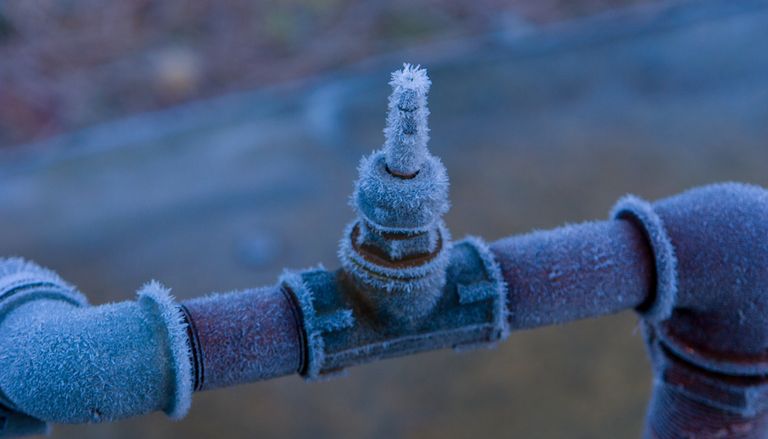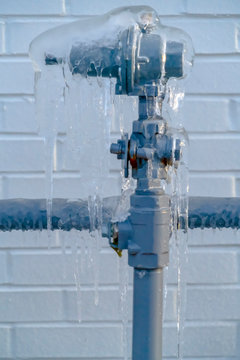Advice for Preventing Frozen Plumbing in Cold Weather: Expert Tips
Advice for Preventing Frozen Plumbing in Cold Weather: Expert Tips
Blog Article
Everybody is bound to have their own unique idea involving Prevent Frozen Pipes .

Cold weather can wreak havoc on your pipes, particularly by freezing pipelines. Right here's how to prevent it from taking place and what to do if it does.
Introduction
As temperatures decline, the danger of icy pipes boosts, potentially resulting in expensive repair services and water damages. Recognizing how to avoid icy pipelines is critical for home owners in cool environments.
Understanding Icy Pipes
What creates pipelines to freeze?
Pipelines ice up when exposed to temperature levels listed below 32 ° F (0 ° C) for prolonged periods. As water inside the pipelines freezes, it increases, putting pressure on the pipeline walls and possibly creating them to burst.
Risks and problems
Icy pipelines can bring about water system disruptions, property damages, and costly repairs. Ruptured pipes can flood homes and create comprehensive structural damages.
Indications of Frozen Pipes
Determining frozen pipelines early can prevent them from rupturing.
Just how to determine icy pipes
Try to find decreased water flow from taps, unusual odors or noises from pipelines, and visible frost on revealed pipelines.
Prevention Tips
Protecting vulnerable pipelines
Wrap pipes in insulation sleeves or utilize warmth tape to shield them from freezing temperatures. Concentrate on pipelines in unheated or exterior areas of the home.
Home heating methods
Maintain interior areas sufficiently heated, particularly locations with plumbing. Open up closet doors to enable warm air to flow around pipes under sinks.
Securing Exterior Plumbing
Garden pipes and outdoor taps
Separate and drain yard pipes before winter. Install frost-proof spigots or cover outside faucets with insulated caps.
What to Do If Your Pipes Freeze
Immediate actions to take
If you think frozen pipes, keep faucets available to eliminate stress as the ice melts. Utilize a hairdryer or towels soaked in warm water to thaw pipelines slowly.
Long-Term Solutions
Architectural adjustments
Consider rerouting pipes far from exterior walls or unheated areas. Add additional insulation to attic rooms, basements, and crawl spaces.
Upgrading insulation
Buy top quality insulation for pipes, attics, and walls. Correct insulation assists maintain consistent temperature levels and minimizes the threat of frozen pipes.
Verdict
Preventing frozen pipes needs aggressive actions and quick responses. By comprehending the reasons, indications, and safety nets, home owners can secure their pipes throughout cold weather.
5 Ways to Prevent Frozen Pipes
Drain Outdoor Faucets and Disconnect Hoses
First, close the shut-off valve that controls the flow of water in the pipe to your outdoor faucet. Then, head outside to disconnect and drain your hose and open the outdoor faucet to allow the water to completely drain out of the line. Turn off the faucet when done. Finally, head back to the shut-off valve and drain the remaining water inside the pipe into a bucket or container. Additionally, if you have a home irrigation system, you should consider hiring an expert to clear the system of water each year.
Insulate Pipes
One of the best and most cost-effective methods for preventing frozen water pipes is to wrap your pipes with insulation. This is especially important for areas in your home that aren’t exposed to heat, such as an attic. We suggest using foam sleeves, which can typically be found at your local hardware store.
Keep Heat Running at 65
Your pipes are located inside your walls, and the temperature there is much colder than the rest of the house. To prevent your pipes from freezing, The Insurance Information Institute suggests that you keep your home heated to at least 65 degrees, even when traveling. You may want to invest in smart devices that can keep an eye on the temperature in your home while you’re away.
Leave Water Dripping
Moving water — even a small trickle — can prevent ice from forming inside your pipes. When freezing temps are imminent, start a drip of water from all faucets that serve exposed pipes. Leaving a few faucets running will also help relieve pressure inside the pipes and help prevent a rupture if the water inside freezes.
Open Cupboard Doors
Warm your kitchen and bathroom pipes by opening cupboards and vanities. You should also leave your interior doors ajar to help warm air circulate evenly throughout your home.

We were brought to that write-up on How to Prevent Your Pipes From Freezing through a pal on a different blog. Loved our blog posting? Please quickly share it. Let other people locate it. We love reading our article about How to Prevent Your Pipes From Freezing.
Click Here Report this page